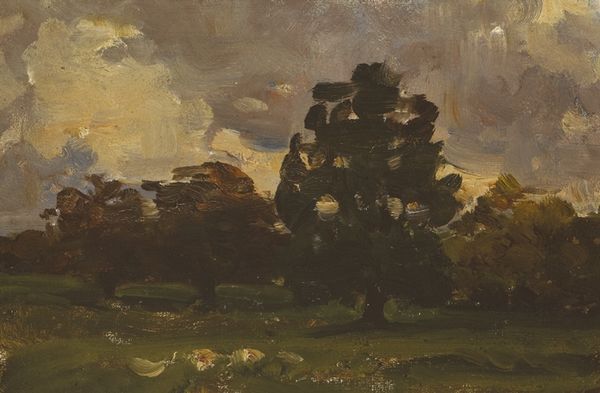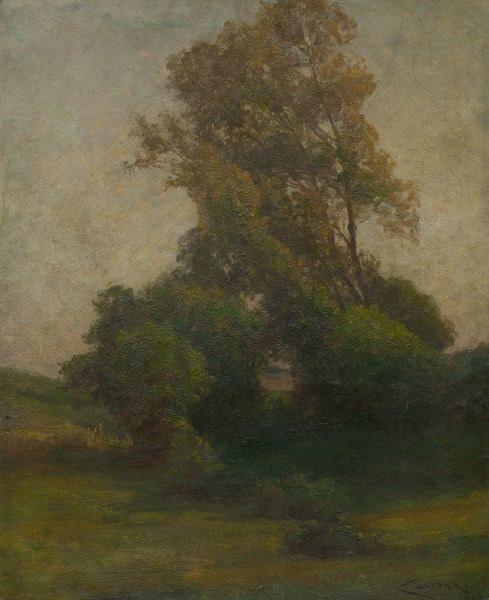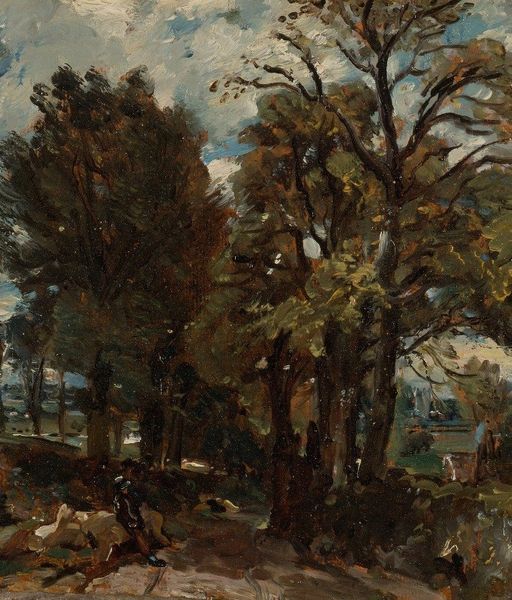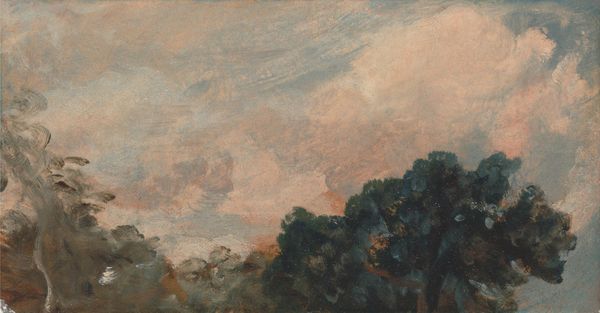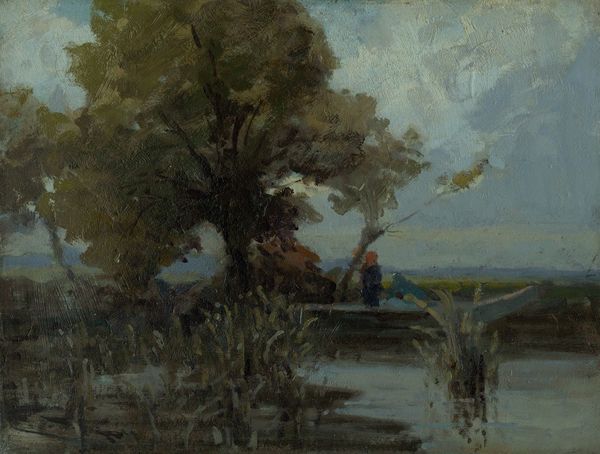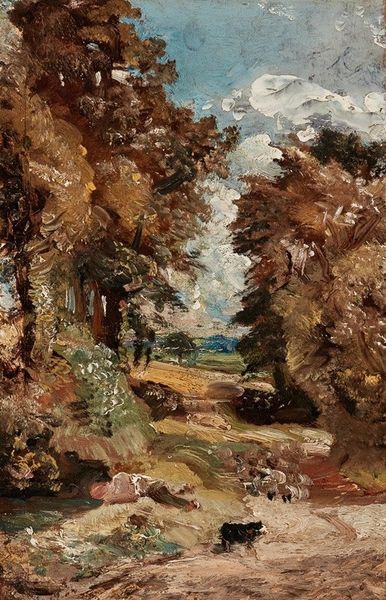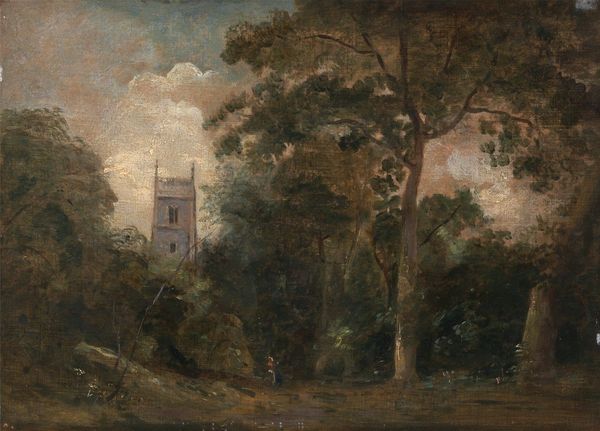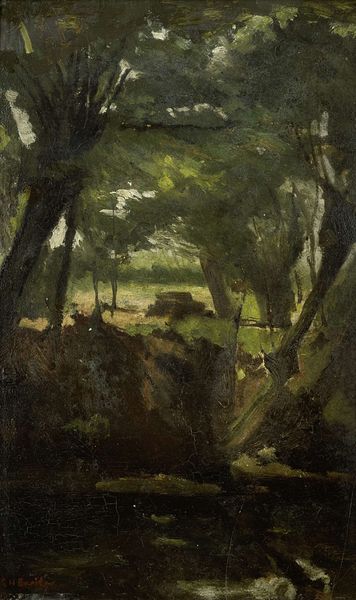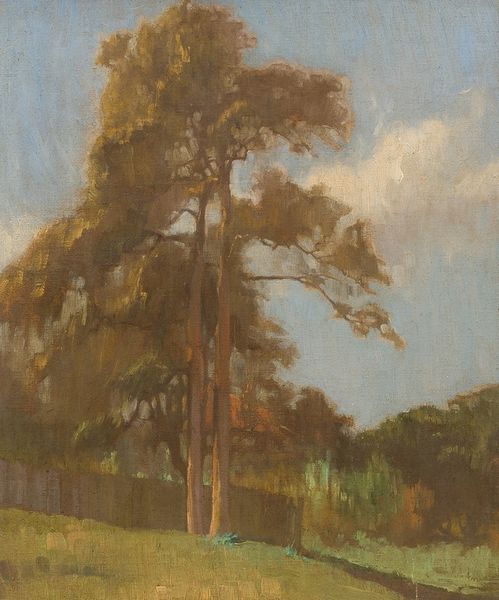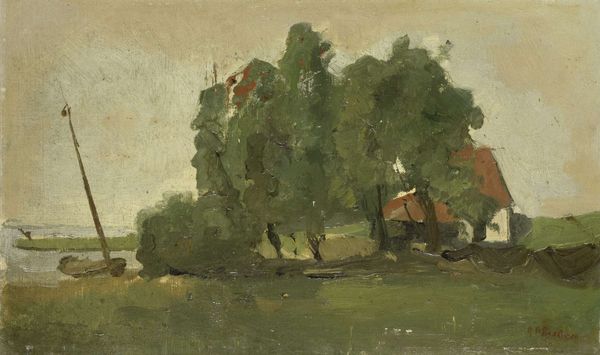
painting, plein-air, oil-paint
#
painting
#
plein-air
#
oil-paint
#
landscape
#
oil painting
#
romanticism
#
genre-painting
#
watercolor
Copyright: Public Domain: Artvee
Curator: There’s an incredible sense of peace that radiates from this landscape. Editor: Indeed. What we’re looking at is John Constable’s "Stoke-by-Nayland", painted around 1810 or 1811. Constable, deeply affected by the enclosure movement, continually represented a disappearing world. It's an oil-on-paper sketch. Curator: You're right; there’s a wistful quality about it. The church tower emerging from the hazy background has a timeless feel, almost like a dream image we glimpse through memory. The church in art often symbolizes permanence and faith, but here it also feels vulnerable, doesn’t it? A sentinel from another age? Editor: Absolutely. His landscapes weren't just pretty scenes. They served as silent protests, capturing a specific historical moment where rural life was being rapidly transformed by industrialization and land ownership changes that displaced so many. He immortalizes an environment being eroded by these forces. Curator: Note how he uses that incredible light, though, it imbues the natural forms, especially the trees, with a kind of reverence. It feels as if they are not merely painted, but almost blessed. The interplay of shadow and illumination almost transcends realism to invoke spiritual presence. Editor: Agreed. Light is central to understanding the shift toward landscape as a carrier for social memory and protest. How do we preserve environments and cultural heritages from encroaching capitalism that threatens their existence? What symbols, or what feeling, can endure? It evokes questions of who benefits and who is disenfranchised by landscape and belonging. Curator: It’s a fascinating tension. He paints a disappearing idyll, but through his attention, through these archetypal and sublime trees, and this church, these symbols live on. There's melancholy, but a quiet defiance too, a cultural thread to follow forward. Editor: Precisely, a way to reimagine what connection to place, community, and historical memory means now, and might signify going forward, which feels critical. It's a deceptively simple sketch holding complex tensions about class and land. Curator: It makes you wonder about the power we assign to the familiar, and to our sacred landscapes. What is lost if they go? What responsibilities do we have to safeguard them, their meanings, their history? Editor: It reframes beauty as a prompt for ethical reflection on progress and erasure. It's a timely and necessary piece.
Comments
No comments
Be the first to comment and join the conversation on the ultimate creative platform.

